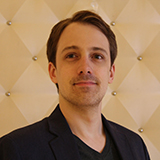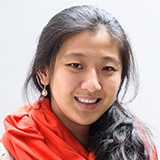Resident physicians are chimeric creatures—part physician delivering healthcare; and part student, attending lectures, completing assignments, and writing tests. Residents endure a constant tug-of-war between these roles. Medical training has classically been conducted as an apprenticeship, with trainees “learning on the job;” often in hospital settings. In the same way that patient-centred care shifted healthcare from paternalistic practices to those which improved ethical healthcare delivery to patients, so too must we shift medical education from the apprenticeship of the last century to a new system of student-centred medical education (SCME). In order to achieve this, we suggest three central tenets that build the foundation behind this philosophy.
Firstly, learner autonomy. Current residency education can be categorically divided into theoretical (content-based) and practical (“on-the-job”) components. Didactic lectures are the preferred content delivery method due to their efficiency, low cost, and division of learning objectives into separate lectures; however, they are not the best or only way. [1-3] The platonic notion of a single superior method of content delivery ought be abandoned. Instead, we suggest that residents be made responsible for the execution of their education. Didactic lectures, simulations, case-based problem solving, and the digitalization of medical knowledge would allow residents to optimize the relevance of their education and organize their time. Self-directed learning by health professionals has been shown to be superior to traditional teaching techniques with regard to increased knowledge. [4] While curricular milestones dictated by licensing bodies serve as the destination, resident learners ought to be granted the autonomy to choose their preferred path; we hypothesize that this would increase learner engagement, content retention, and wellness.
Regarding practical learning, the conscientious resident is aware of their strengths and weaknesses, and should be encouraged to tailor their rotations according to their learning needs, selecting rotations that will fill gaps in their knowledge. Student-directed curriculum would enable residents to control the amount of time spent in each area. Numerous barriers present themselves, the most obvious of which is the conflict between service and education.
Secondly, education prioritization. The greatest problem that arises in the application of learner autonomy is that while education benefits, the medical or surgical service may suffer due to insufficient human resources. A recent study showed that internal medicine residents without duty-hour restrictions were more likely to report dissatisfaction with educational quality and overall wellbeing. [5] Despite the incorporation of “protected time” earmarked for learning, service requirements often supercede these opportunities.
With a prioritization of education over service, students will be empowered to request clinical experience with a specific milestone or task. Surgical residents may request more exposure to a specific procedure; medicine residents may request to manage specific pathologies. In general, the application of this principle would offload service responsibilities from residents and commit the resident to service-based activities only insofar as they advance the education of the learner.
Critically, this issue is not about the number of hours worked, but rather the educational value of those hours. Some contend that residents should not guide their education, because residents do not know what is important to learn or how to learn it; and this is a challenge SCME faces, but solutions do exist.
Thirdly, interdisciplinary education. The paradox that has plagued post-secondary education for decades has been the fact that despite pedagogical advances, specialist educators are not involved in curriculum development or delivery. Teaching is performed by content experts; however, specialized knowledge does not qualify one to teach. Teachers with advanced degrees and special interest in education would provide guidance to residents, identify knowledge gaps, and track learning milestones. Such educators could work with content experts to make lectures more engaging, design alternative delivery methods, and tailor the timing of content delivery to maximize retention.
As the practice of medicine has evolved from the lone physician to a team-based approach, so too must medical education evolve. An interdisciplinary approach has benefited patients by addressing their varied needs, and a similar shift should occur for medical learners.
In a learner’s utopia, these principles would be law; however, true SCME requires enormous resources and time. Learner interests will conflict with patient interests, and in these situations, residents must always remember that they are physicians first, and must adhere to the ethical obligations therein. These tenets are ideals towards which educators should strive; yet the societal responsibility born by each physician requires a balance to be struck between professional development and patient care.
The shift towards patient-centred care saw decision-making moved from the physician to the patient; so too should the shift occur from professors to medical learners. Understanding the dual role of residents as both learners and service-providers is critical to the development of the next generation of physicians and physician educators. We encourage all practising physicians and surgeons to quell the indignation they may feel in the context of the notoriously gruelling hours faced by residents past, and instead to honestly consider the aspects of their training that were truly educational. We believe that, putting learners at the centre of medical education is the next step towards training the next generation of doctors.
 Keegan Guidolin is a surgical resident physician in general surgery at the University of Toronto.
Keegan Guidolin is a surgical resident physician in general surgery at the University of Toronto.
 Han Yan is a surgical resident physician in neurosurgery at the University of Toronto.
Han Yan is a surgical resident physician in neurosurgery at the University of Toronto.
Competing interests: None declared.
References:
- Vernon DT, Blake RL. Does problem-based learning work? A meta-analysis of evaluative research. Acad Med 68(1993):550-563.
- Jordan J, Jalali A, Clarke S, Dyne P, Spector T, Coates W. Asynchronous vs didactic education: it’s too early to throw in the towel on tradition. BMC medical education. 2013 Dec;13(1):105.
- Raleigh MF, Wilson GA, Moss DA, Reineke-Piper KA, Walden J, Fisher J, Fisher DJ, Williams T, Alexander C, Niceler B, Viera AJ, Zakrajsek T. Same content, different methods: comparing lecture, engaged classroom, and simulation. Fam Med. 2018;50(2):100-105.
- Murad MH, Coto‐Yglesias F, Varkey P, Prokop LJ, Murad AL. The effectiveness of self‐directed learning in health professions education: a systematic review. Medical education. 2010 Nov 1;44(11):1057-68.
- Desai SV, Asch DA, Bellini LM, Chaiyachati KH, Liu M, Sternberg AL, Tonascia J, Yeager AM, Asch JM, Katz JT, Basner M. Education Outcomes in a Duty-Hour Flexibility Trial in Internal Medicine. New England Journal of Medicine. 2018 Mar 20.
